
What are Aphids?

Aphids are tiny soft shell bugs that usually attach themselves to the underside of leaves. They can spread disease and damage plants, mostly by weakening plants or trees.
Aphids do not often kill plants unless they are very young sprouts. Aphids suck the sap from the plant and refine it into honey. There are many different reasons aphids develop, but luckily there are also plenty of ways to get rid of aphids.
How do aphid infestations happen and how do you get rid of them?
Flowering and Fruiting
Aphids are prevalent in the spring when plants and fruit trees are flowering and fruiting. Basically, they flourish on stressed plants that often have a root structure that is too small or weak to sustain top growth. This is why over-fertilizing with nitrogen can stimulate aphid infestations because nitrogen stimulates top growth.

Solutions:
– Probiotics and mycorrhiza
– Proper watering and healthy soil
– Phosphorus nitrogen balance
All plants require different amounts of nitrogen to thrive. In general, hot crops require more nitrogen than cold crops.
If the leaves of your plant are yellowing evenly, and not just between veins, it probably needs nitrogen. When its time for fruit to ripen I will start feeding when summer crops set fruit, but I usually do the biggest nitrogen feeding to ripen fruits at the end of their life cycles.
Culling
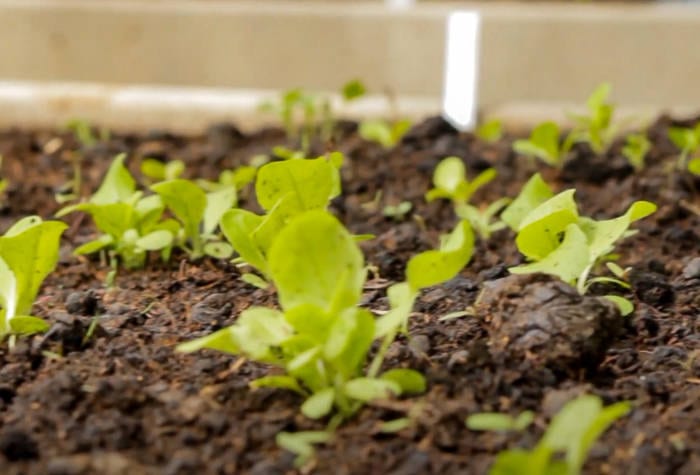
Weak genetics also play a role in aphid infestations. This is why the same kind of plants can grow in the same soil with all the same input, while one can get covered in aphids while the others won’t.
Solution: I usually remove these plants as they will never be optimally productive and will always be challenging. This process is called culling.
Pro tip: always have starter trays ready with sprouts to replace these occasional empty spots.
Ventilation and Pruning
Ventilation and airflow in all greenhouses is key. When wet leaves sit on other wet leave or surfaces, it is a recipe for diseases of all kinds. Also, moving air is a force that strengthens and conditions the structure of plants, making them more disease resistant.
Aphids are very delicate little creatures that need to be protected from pounding water, blowing air, sun, and predators. Therefore, they thrive in jungle environments where plants are very tight, and they can find many nooks between leaves that are moist, dark, and protected.
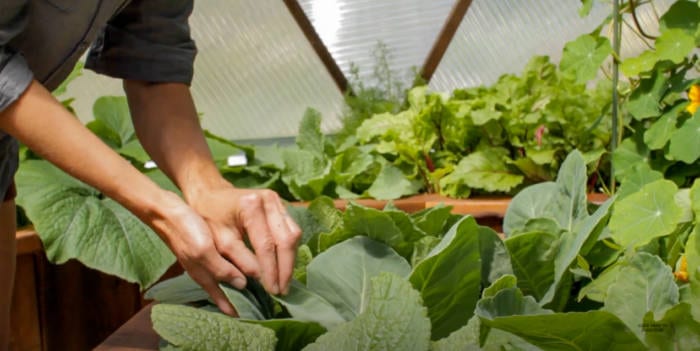
Make sure all vents and fans are working correctly. I always suggest a screen door as soon as its warm enough, or more fans.
Prune leaves from the bottom of plants to encourage airflow throughout. Thin plants appropriately and try to ensure enough space for roots and tops to thrive.
Spray your plants forcefully with water instead of going easy on them. Think rain; it is a force that strengthens them. Avoid doing this often with squashes, melons, cucumber, and beans in domes at it can encourage fungal disease if leaves stay wet. The rest should dry quickly.
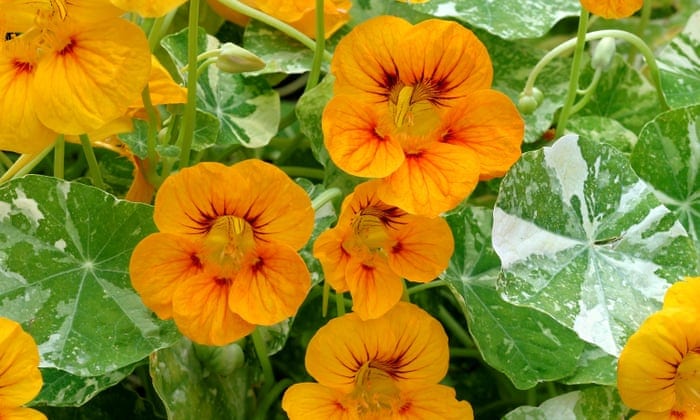
Additional Solutions to Fight Aphids
Nasturtiums
Nasturtiums as a diversion are beautiful, delicious, and highly effective at distracting aphids. They are aphid’s favorite thing.
Soapy Solution
Dr. Bronner’s Peppermint Soap and water will help detach the aphid from the leaf by releasing the adhesive sugar they produce. Use about 1 TB. per 1 liter of water in a spray bottle. I spray and leave on for 10 min to an hour. Then rinse off.

If this does not solve the problem, then I add about 1 TB. of any kind of vegetable oil to the insecticidal soap mix. Make sure to rinse off the leaves after no more than a couple hours. This will suffocate aphids, whiteflies, and other tiny pests. Fruiting plants especially need to respire, so I believe rinsing them is vital for health.
Diatomaceous earth (DE)
Diatomaceous earth (DE) s a non-toxic, organic material that desiccates tiny insects. Ants sometimes farm aphids for the honey. To control ants and minimize aphid populations, DE can be very useful.
Dusting it around the edge of beds can kill ants while keeping pollinators and beneficial insect populations safe and healthy. Wearing a mask is highly recommended when working with DE.
Ladybugs
Ladybug larva are a natural predator of aphids. Not only are they cute, but their babies love to eat aphids. Ladybug larva looks like little black and orange alligators with small spikes. Just keep your soil watered, and your dome somewhat healthy, and ladybugs will thrive year after year.
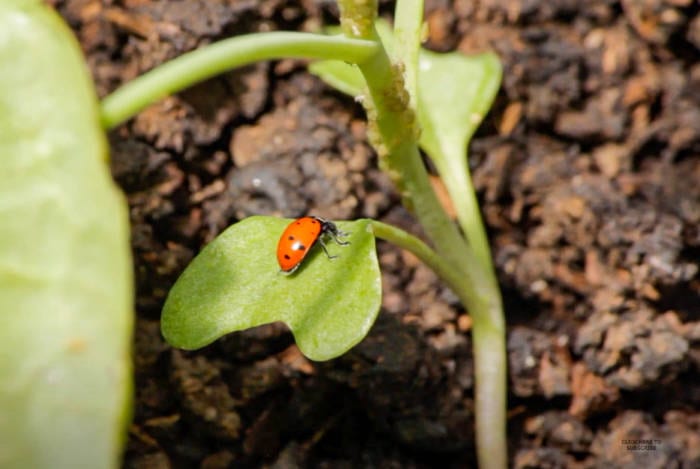
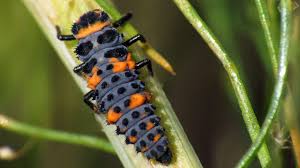
Aphid Species
There are more than 4,000 species of aphids that have been described, some 250 of which are considered garden pests. But most species can feed on only a few types of plants. However, with so many kinds of aphids, few plants grown in North America do not support at least one aphid. Here is a good reference of species in Colorado that feed on Shade Trees and Ornamentals.
Questions on How To Get Rid of Aphids?
Many Growing Dome owners frequently ask us questions regarding aphid control. Here are some other ideas to get rid of aphids naturally in your greenhouse:
1. If the Dome is planted really densely, thin the plants by pulling the most infested plants first.
2. Spray the entire plant with insecticidal soap or soapy water. Joy and Seventh Generation are good choices to mix with water. Make sure to spray the underside of each leaf as that’s where the bugs like to hide.
3. If the infestation is spreading to other plants in your dome, in addition to the above methods, you may want to create a plant-free dirt zone, this will slow or stop the bugs from moving on to other plants.
4. Here’s another recipe:
a. 2 TBS of ammonia
b. 2 TBS of lemon-scented Joy dish soap
c. 1/4 Can of cheap beer and then mix with 1 gallon of water
5. In addition to spraying the plants, you can also buy yellow plastic lunch plates (aphids are attracted to yellow). Smear cooking oil on them, or Vaseline. Aphids will go to the plates and get stuck.
6. Shake the plants daily, and allow the aphids to fall off onto the plates. Some may fly away, and others will die due to the soap solution. Do this daily till they are gone.
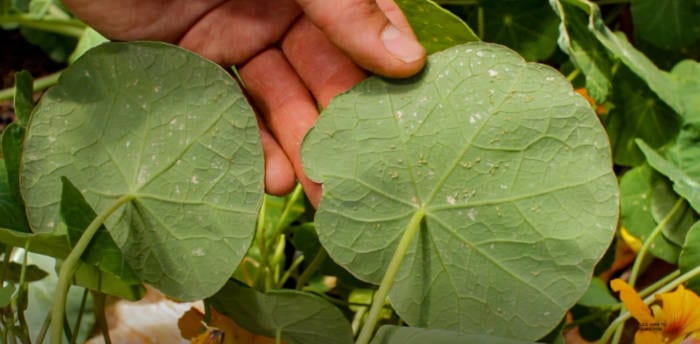
7. Also refer to our other Blog post on How to Control Aphids in your Greenhouse.
These solutions should help get rid of aphids. If you have any questions about organic pest control in your Growing Dome, please feel free to reach out via email. Many blessings for beautiful, thriving gardens!

1 Comment
Hi Heather, great article. I didn’t have any idea about the lady bug larva. Looks so good too. I an sure these great tips will help me rid my plants from aphids.